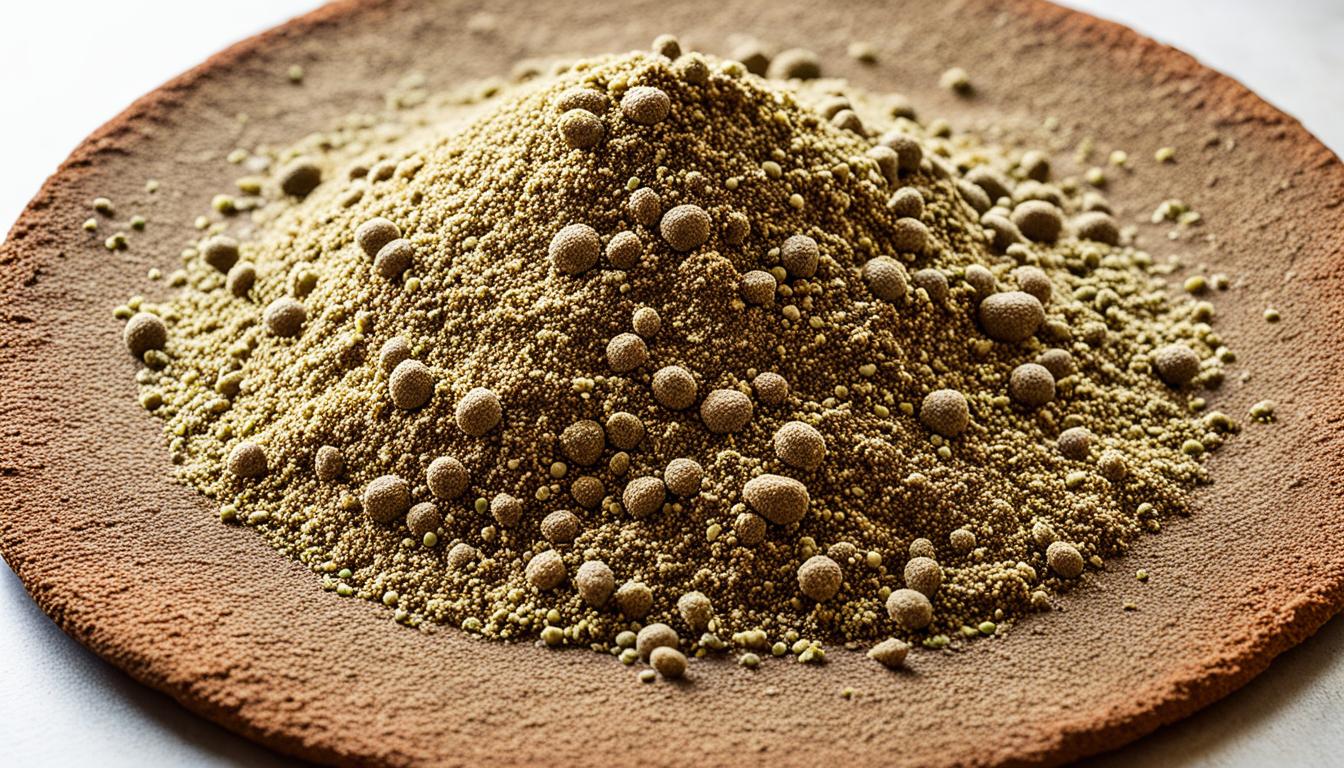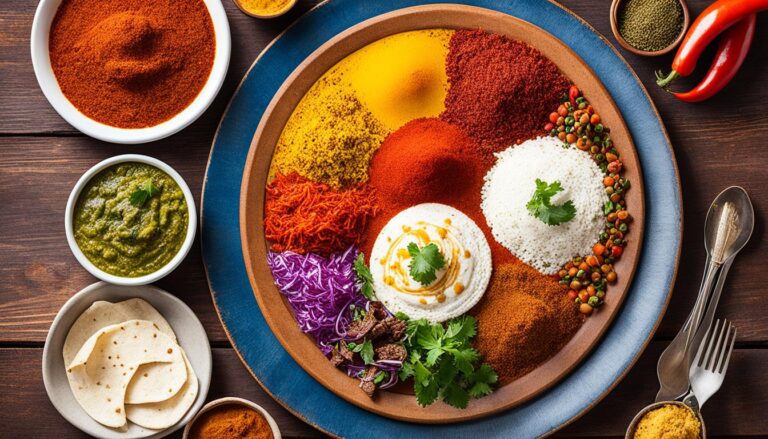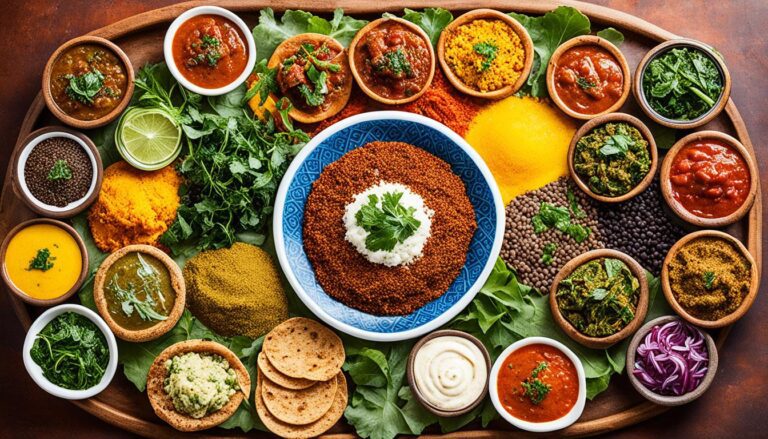What Is the Bread in Ethiopian Food?
When it comes to Ethiopian cuisine, there is one bread that stands out as a staple food. It is called injera, and it is not your ordinary bread. Injera is a thin and spongy pancake-like bread made from teff flour, an ancient grain native to Ethiopia. But what makes injera so unique? How is it prepared? And why is it such an important part of Ethiopian culture and cuisine?
To understand injera, we need to delve into its main ingredient: teff flour. Teff is a highly nutritious grain that has been cultivated in Ethiopia for thousands of years. It is rich in protein, essential amino acids, carbohydrates, minerals, and vitamins, making it a valuable addition to the Ethiopian diet.
Injera is made by fermenting a mixture of teff flour, water, and a starter. The fermentation process gives injera its distinctive sour taste and spongy texture. The resulting bread is typically rolled up, thin, and round with honeycomb-like ‘eyes’ on the top.
Injera plays a significant role in Ethiopian culture and cuisine. It is not only consumed daily but also served at various celebrations, ceremonies, and religious events. Injera is often accompanied by a variety of stews and vegetables, and it is traditionally eaten by tearing off pieces of the bread and using them to scoop up the food.
Key Takeaways:
- Injera is a unique bread in Ethiopian cuisine, made from teff flour.
- Teff is an ancient grain native to Ethiopia and is highly nutritious.
- Injera is prepared by fermenting a mixture of teff flour, water, and a starter, which gives it a sour taste and spongy texture.
- It is a staple food in Ethiopia and is served with various stews and vegetables.
- Injera plays a significant role in Ethiopian culture and is consumed daily as well as during celebrations and religious events.
The Origins and Ingredients of Injera
Injera, a staple in Ethiopian and Eritrean cuisines, has a rich history and mysterious origins. This traditional bread is primarily made from teff flour, an ancient grain cultivated in Ethiopia for thousands of years.
Teff flour is highly valued for its nutritional benefits, containing protein, essential amino acids, carbohydrates, minerals, and vitamins. Injera made from teff flour is known for its unique sour taste and spongy texture.
While teff is the most common grain used to make injera, other grains such as sorghum, maize, barley, wheat, and finger millets are sometimes incorporated into the batter. These variations in ingredients give rise to different flavors and textures of injera.
The cultural significance of injera extends beyond Ethiopia and Eritrea. In parts of Sudan and Kenya, a similar bread known as kisra is consumed. Injera is deeply integrated into the culinary traditions of these regions, becoming a key component of various celebrations, ceremonies, and religious events.
Historically, injera played a vital role in the daily lives of the Ethiopian and Eritrean people. It was and continues to be a symbol of cultural identity and unity, bringing people together around a communal plate to share meals and strengthen social bonds.
The traditional practice of making injera has been passed down through generations, preserving the bread’s cultural significance and maintaining its authenticity. Today, injera remains a beloved and essential part of Ethiopian and Eritrean cuisine, enjoyed both locally and internationally.
The Traditional Preparation and Consumption of Injera
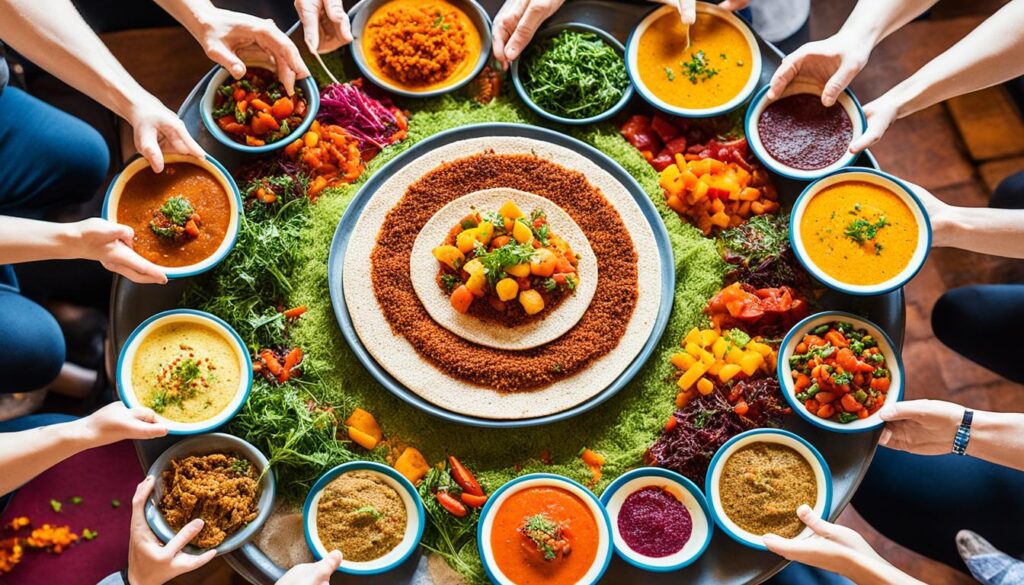
Injera, a staple in Ethiopian cuisine, is traditionally prepared and consumed using age-old practices. One of the most common ways to enjoy injera is by eating it with a flavorful stew called wot. Wot is made from a variety of ingredients, including vegetables, meat, and a blend of aromatic spices. Two popular wot dishes are doro-wot, a spicy chicken stew, and shiro, a savory lentil-based stew.
When dining in Ethiopia, you’ll notice that injera is not served on individual plates but rather on a communal plate. This communal dining practice reflects the unity, friendship, and closeness that are deeply embedded in Ethiopian culture. As people gather around the plate, they tear off pieces of injera to scoop up the stews, creating a truly interactive and shared dining experience.
Injera’s significance extends beyond everyday meals. It plays an integral role in various cultural and religious ceremonies, such as baptism, marriage, and graduation. In these special occasions, injera is not only a symbol of good fortune but also a representation of hospitality and domestic management.
Whether enjoyed in the comfort of an Ethiopian home or at a local restaurant, the traditional preparation and consumption of injera offers a delightful taste of Ethiopian cuisine and a glimpse into the rich cultural practices of the Ethiopian people.
Variations and Contemporary Use of Injera
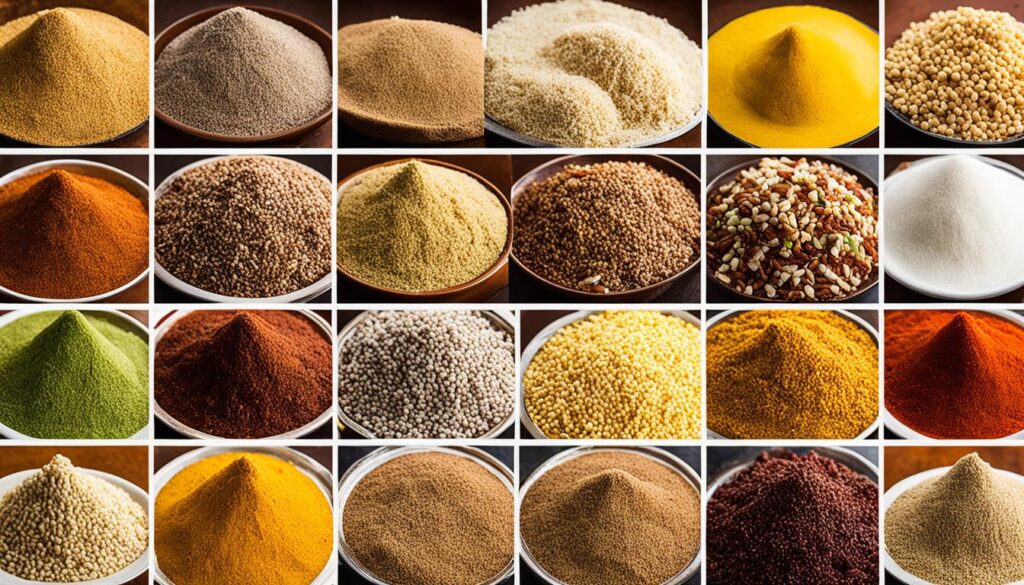
Injera, the traditional bread of Ethiopia, exhibits variations in ingredients and appearance across different regions. These variations are influenced by the availability of grains and cultural preferences. In the lowlands of Ethiopia, sorghum features prominently in the production of injera, lending a distinct flavor to the bread. On the other hand, in the highlands, barley is commonly used for making injera. One variation that stands out is the color of the teff used in the dough. White-grained teff is considered more desirable and symbolizes a higher status compared to the red-grained teff used in some areas.
Injera’s popularity has spread worldwide, and it is now available in grocery stores and restaurants specializing in Ethiopian and Eritrean cuisine in various countries, including the United States. This global availability allows people from different cultures to experience and enjoy the unique flavors and textures of injera. Its versatility as a bread makes it a beloved choice, as it can be used to soak up the juices and flavors of various stews and dishes. As a result, injera is not only a tasty and nutritious staple in Ethiopia but has also become a cultural ambassador for Ethiopian cuisine.
Conclusion
Injera is a central component of Ethiopian cuisine, known for its unique flavors and cultural significance. This traditional Ethiopian bread, made from teff flour and fermented batter, adds a sour and spongy element to meals. Its versatility is remarkable, as injera is used as a utensil, plate, and bread, with various stews and vegetables served on top of it.
However, injera’s significance extends beyond food. It plays an important role in cultural practices, celebrations, and religious ceremonies in Ethiopia. This beloved bread represents unity and friendship, as people tear off pieces to share meals from a communal plate. It is also considered a symbol of good fortune, hospitality, and domestic management.
Whether enjoyed in Ethiopia or abroad, injera provides a delicious and memorable dining experience in Ethiopian cuisine. Its unique flavors, sour taste, and spongy texture make it a standout bread. So, next time you have the opportunity, be sure to try injera and immerse yourself in the rich flavors and cultural heritage of Ethiopian cuisine.

